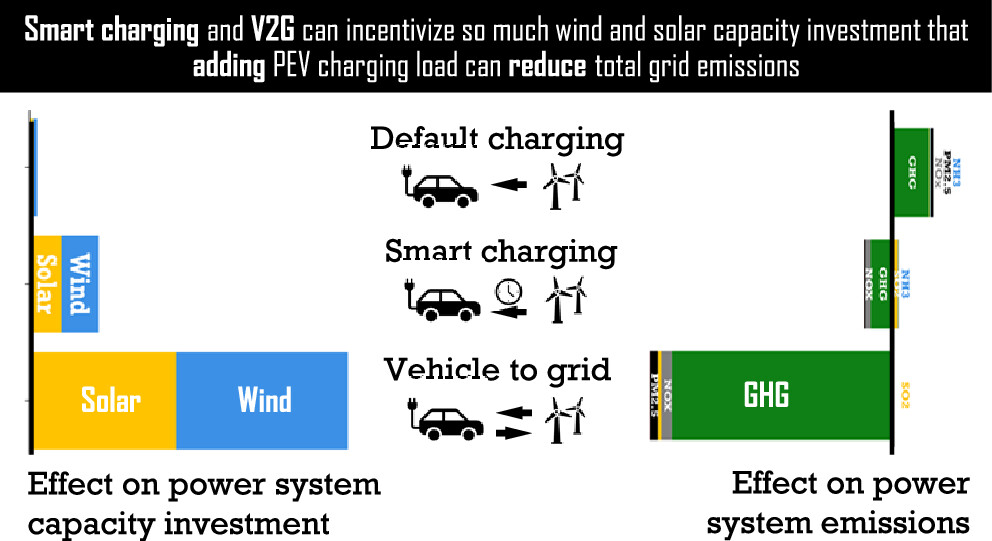Researchers discover a way to generate negative emissions from charging electric cars
The answer lies in strategic charging to encourage solar and wind power development

By Sarah DeWeerd October 21, 2025 Anthropocene
Charging electric vehicles (EVs) when renewable energy is abundant—and supplying power back to the grid when demand peaks—could significantly cut greenhouse gas emissions from the power system, according to a new study. The analysis finds that strategically timed EV charging not only reduces emissions but could even yield negative emissions by encouraging the expansion of renewable energy.
Past research has shown that “smart charging”—timing EV charging to periods of low grid emissions—can minimize their impact, while using EV batteries to return power to the grid (“vehicle-to-grid,” or V2G) has also emerged as a decarbonization strategy in recent years. However, this is the first study to examine how these strategies interact to influence grid infrastructure and renewable investment.
Researchers modeled the effects of electrifying 10% of vehicles on PJM, the largest U.S. grid operator, in 2035. They simulated 100 scenarios to assess how EVs shape grid costs and emissions depending on charging patterns and renewable capacity.
The results were striking. When drivers follow the default habit of plugging in after their final trip of the day, emissions actually rise. Charging at night often coincides with high demand and limited renewable supply, forcing fossil-fuel plants to ramp up. This approach also fails to spur investment in wind and solar power.
Electric vehicles don’t just cut tailpipe emissions, they drive infrastructure change
But when EVs are charged smartly—drawing electricity when prices and emissions are low—renewable investment increases by 4%. When this is combined with V2G technology, which allows EVs to both draw and supply power, renewable investment jumps by 23%. With more clean energy on the grid, the emissions from charging drop so much that the system overall produces fewer emissions than before—essentially making EV charging carbon-negative.
These changes also carry major public health and economic benefits. Without considering renewable expansion, charging each EV costs society $240–$610 annually in pollution-related damages. Smart charging cuts those costs by $230 per vehicle per year, while combining smart charging with V2G slashes them by $2,200 annually.
It’s a win for individual EV owners too, because they can minimize the costs of charging and sell electricity back to the grid. However, the system might require the adoption of additional technologies: “Home chargers capable of receiving signals from a utility and adjusting the timing and rate of charging in response are needed to enable cost-minimizing charging,” the researchers note, as well as technology to enable power from EV batteries to feed into the grid.
Source: Chen J. et al. “Negative Electric Vehicle Emissions: Vehicle-to-Grid Can Incentivize Enough Wind and Solar Investment to Reverse EV Charging Emissions.” Environmental Science & Technology 2025.
